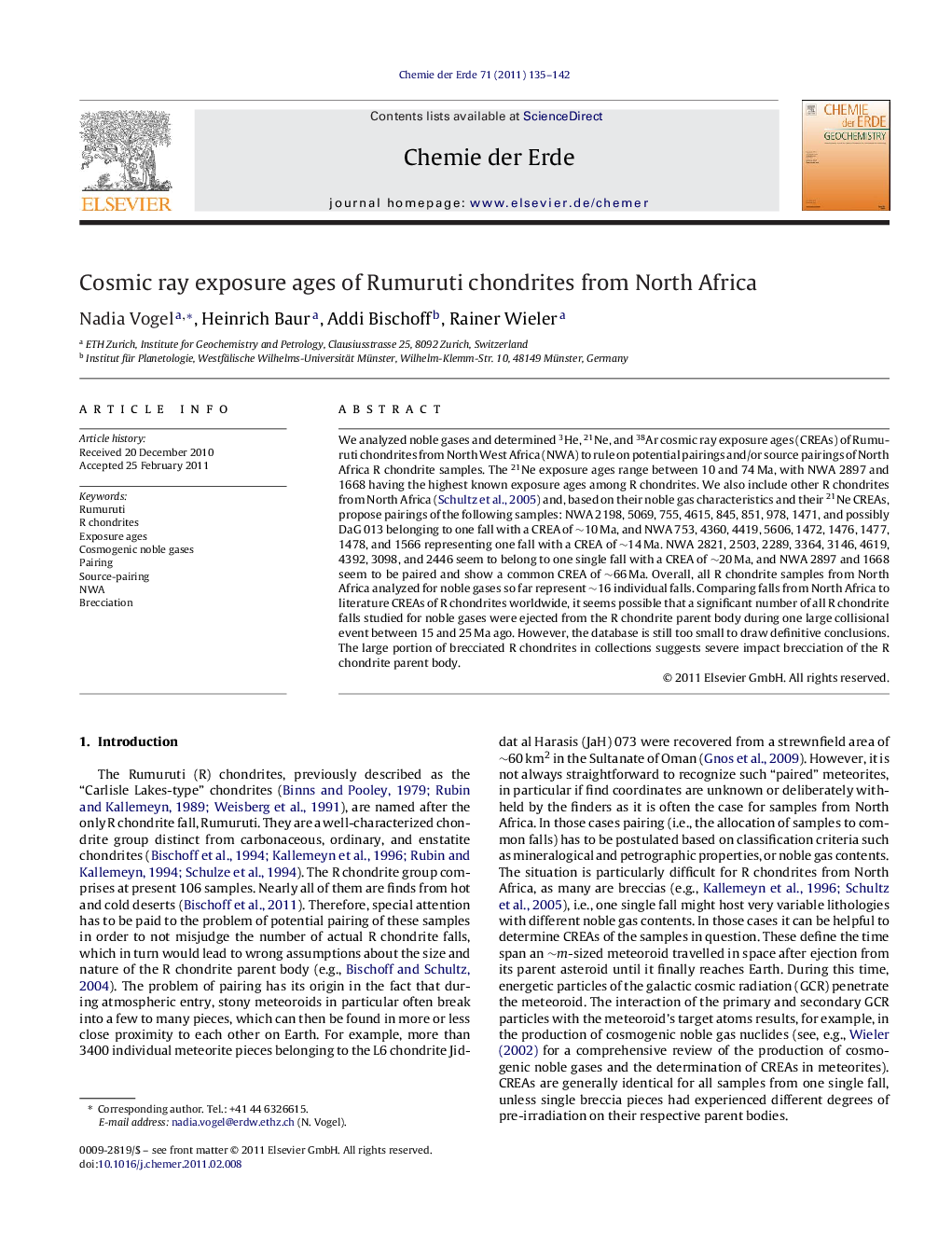| Article ID | Journal | Published Year | Pages | File Type |
|---|---|---|---|---|
| 4407037 | Chemie der Erde - Geochemistry | 2011 | 8 Pages |
We analyzed noble gases and determined 3He, 21Ne, and 38Ar cosmic ray exposure ages (CREAs) of Rumuruti chondrites from North West Africa (NWA) to rule on potential pairings and/or source pairings of North Africa R chondrite samples. The 21Ne exposure ages range between 10 and 74 Ma, with NWA 2897 and 1668 having the highest known exposure ages among R chondrites. We also include other R chondrites from North Africa (Schultz et al., 2005) and, based on their noble gas characteristics and their 21Ne CREAs, propose pairings of the following samples: NWA 2198, 5069, 755, 4615, 845, 851, 978, 1471, and possibly DaG 013 belonging to one fall with a CREA of ∼10 Ma, and NWA 753, 4360, 4419, 5606, 1472, 1476, 1477, 1478, and 1566 representing one fall with a CREA of ∼14 Ma. NWA 2821, 2503, 2289, 3364, 3146, 4619, 4392, 3098, and 2446 seem to belong to one single fall with a CREA of ∼20 Ma, and NWA 2897 and 1668 seem to be paired and show a common CREA of ∼66 Ma. Overall, all R chondrite samples from North Africa analyzed for noble gases so far represent ∼16 individual falls. Comparing falls from North Africa to literature CREAs of R chondrites worldwide, it seems possible that a significant number of all R chondrite falls studied for noble gases were ejected from the R chondrite parent body during one large collisional event between 15 and 25 Ma ago. However, the database is still too small to draw definitive conclusions. The large portion of brecciated R chondrites in collections suggests severe impact brecciation of the R chondrite parent body.
